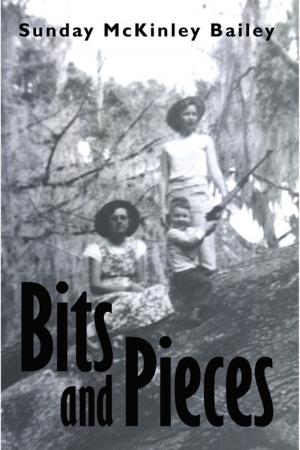The Third Voyage
A World War Ii Voyage of the Libertyship Albert Gallatio & Crew
Nonfiction, History, Military, World War II| Author: | Wilbur Lawson | ISBN: | 9781469118611 |
| Publisher: | Xlibris US | Publication: | April 8, 2002 |
| Imprint: | Xlibris US | Language: | English |
| Author: | Wilbur Lawson |
| ISBN: | 9781469118611 |
| Publisher: | Xlibris US |
| Publication: | April 8, 2002 |
| Imprint: | Xlibris US |
| Language: | English |
A busy little Navy tug officiously pulled the Noumea anti-submarine nets to one side and the Albert Gallatin, with her barge in tow, moved through the gap. A mile or so away on our port side were the U.S.S. South Dakota and an assortment of cruisers and destroyers. Ship after ship could be seen in a seemingly endless anchorage that reached to the horizon. We maneuvered through these ships until both the Gallatin and her tow were clear of the net and the opening could be safely closed. Once inside, the barge cast off our cables and they were pulled up onto the Gallatins stern. We had been told that the big heavy lift crane we had towed up from Auckland was to be used to clean debris from this harbor, to make it safer for the Naval vessels using it and increase its usable space. As soon as we were clear of the barge, we headed toward another set of nets and through them. Inside this net we began to pass more Naval vessels, all of a different type. Here were all kinds of ships crucial to operating a naval fleet far from the stateside Naval Bases. We glided past several ships encircled with small boats; with more coming and going in every direction. Their names were called out by crew members as we passed. I could only see numbers on the gray hulls. Their fleet functions became the subject of heated discussions and arguments among the onlooking experts. Here were the Navys supply, ammunition, and repair ships. Next we glided past the Solace, a gleaming white hospital ship with bright red crosses painted on her sides, her rails lined with men, bandages gleaming whitely behind the shadowed rails. A few nurses were visible near the upper railings. Still we continued on, past all of these invaluable vessels. When the pilot called for the anchor, we were far closer to Noumea than any other of the ships in sight. We had been placed where we would have the best possible protection if a Japanese attack came. We were carrying a cargo which the military brass believed to be of unmatched value. The Gallatin had loaded that valuable cargo in Auckland, New Zealand. Along with the cargo, we carried twelve passengers. The first six passengers had kept to themselves and talked only when they had to during the trip from Auckland. Those who did hear a word or two from them found those words almost invariably hasty and nasty. This six were all older men, lean and sunburned Aussies and New Zealanders. Eccentric loners, they were coming here so they could be furtively returned to their bleak stations as coast watchers. There they would again report movements of Japanese ships to the Allied Pacific Command. Most of them had yellow faces and eyeballs from the atabrine pills they took, given to everyone chronically exposed to malaria. The other six passengers were young and friendly American Army Air Force weathermen. They were bound somewhere far to the west of Noumea to establish weather stations on islands closer to the Japanese. From there they would send weather reports back to military intelligence. Both groups left the Gallatin immediately that we were anchored. The boat which took them, first discharged a group of voluble, angry, and arguing Navy and Army Officers. These were the men charged with unloading our ship. Our cargo was so eagerly awaited that as these men climbed on board the Gallatin they were already arguing about who was to be in charge of the process. Whoever became the winner in this unloading operation would have a strong hand in any following negotiations. These men had been waiting rather impatiently for us since we had left Auckland, New Zealand; for the holds of the S.S. Albert Gallatin were overflowing with twenty-four bottle cases of morale building New Zealand Waitemata beer! CHAPTER SEVEN The Beer Ship Until the arrival of The Gallatins shipload of beer, the policy of the South Pacific Military Commands had prohibited alcoholic beverages for enlisted men of the Army
A busy little Navy tug officiously pulled the Noumea anti-submarine nets to one side and the Albert Gallatin, with her barge in tow, moved through the gap. A mile or so away on our port side were the U.S.S. South Dakota and an assortment of cruisers and destroyers. Ship after ship could be seen in a seemingly endless anchorage that reached to the horizon. We maneuvered through these ships until both the Gallatin and her tow were clear of the net and the opening could be safely closed. Once inside, the barge cast off our cables and they were pulled up onto the Gallatins stern. We had been told that the big heavy lift crane we had towed up from Auckland was to be used to clean debris from this harbor, to make it safer for the Naval vessels using it and increase its usable space. As soon as we were clear of the barge, we headed toward another set of nets and through them. Inside this net we began to pass more Naval vessels, all of a different type. Here were all kinds of ships crucial to operating a naval fleet far from the stateside Naval Bases. We glided past several ships encircled with small boats; with more coming and going in every direction. Their names were called out by crew members as we passed. I could only see numbers on the gray hulls. Their fleet functions became the subject of heated discussions and arguments among the onlooking experts. Here were the Navys supply, ammunition, and repair ships. Next we glided past the Solace, a gleaming white hospital ship with bright red crosses painted on her sides, her rails lined with men, bandages gleaming whitely behind the shadowed rails. A few nurses were visible near the upper railings. Still we continued on, past all of these invaluable vessels. When the pilot called for the anchor, we were far closer to Noumea than any other of the ships in sight. We had been placed where we would have the best possible protection if a Japanese attack came. We were carrying a cargo which the military brass believed to be of unmatched value. The Gallatin had loaded that valuable cargo in Auckland, New Zealand. Along with the cargo, we carried twelve passengers. The first six passengers had kept to themselves and talked only when they had to during the trip from Auckland. Those who did hear a word or two from them found those words almost invariably hasty and nasty. This six were all older men, lean and sunburned Aussies and New Zealanders. Eccentric loners, they were coming here so they could be furtively returned to their bleak stations as coast watchers. There they would again report movements of Japanese ships to the Allied Pacific Command. Most of them had yellow faces and eyeballs from the atabrine pills they took, given to everyone chronically exposed to malaria. The other six passengers were young and friendly American Army Air Force weathermen. They were bound somewhere far to the west of Noumea to establish weather stations on islands closer to the Japanese. From there they would send weather reports back to military intelligence. Both groups left the Gallatin immediately that we were anchored. The boat which took them, first discharged a group of voluble, angry, and arguing Navy and Army Officers. These were the men charged with unloading our ship. Our cargo was so eagerly awaited that as these men climbed on board the Gallatin they were already arguing about who was to be in charge of the process. Whoever became the winner in this unloading operation would have a strong hand in any following negotiations. These men had been waiting rather impatiently for us since we had left Auckland, New Zealand; for the holds of the S.S. Albert Gallatin were overflowing with twenty-four bottle cases of morale building New Zealand Waitemata beer! CHAPTER SEVEN The Beer Ship Until the arrival of The Gallatins shipload of beer, the policy of the South Pacific Military Commands had prohibited alcoholic beverages for enlisted men of the Army















